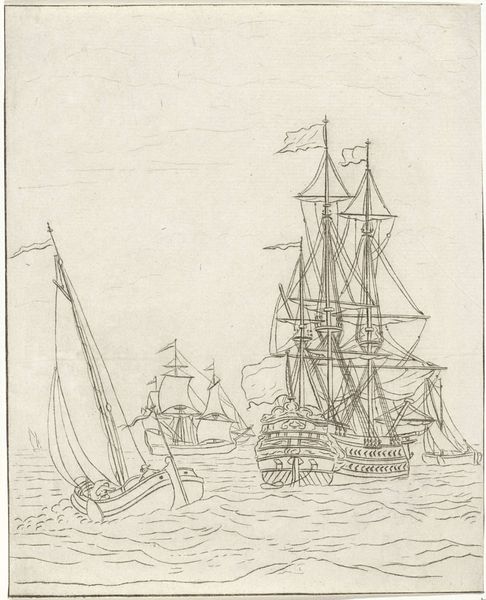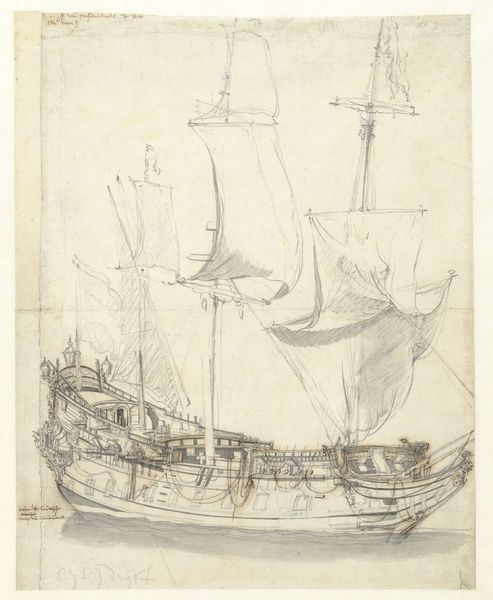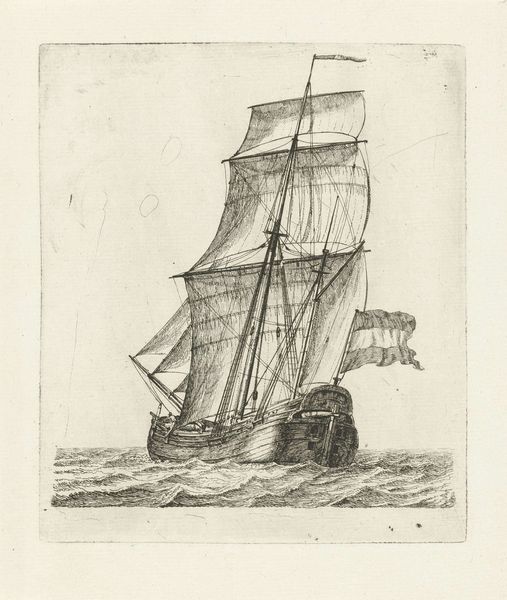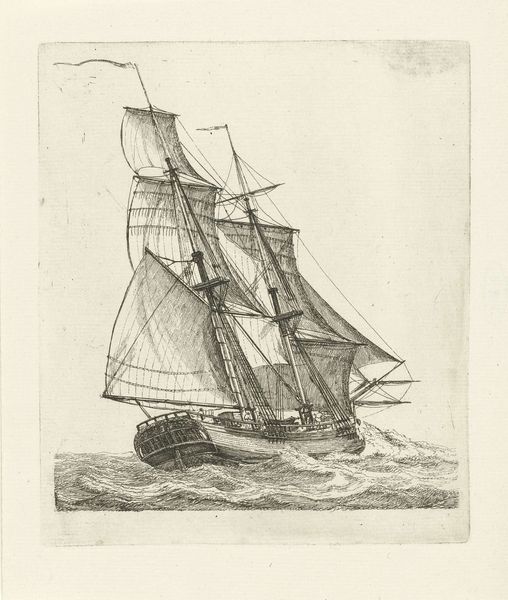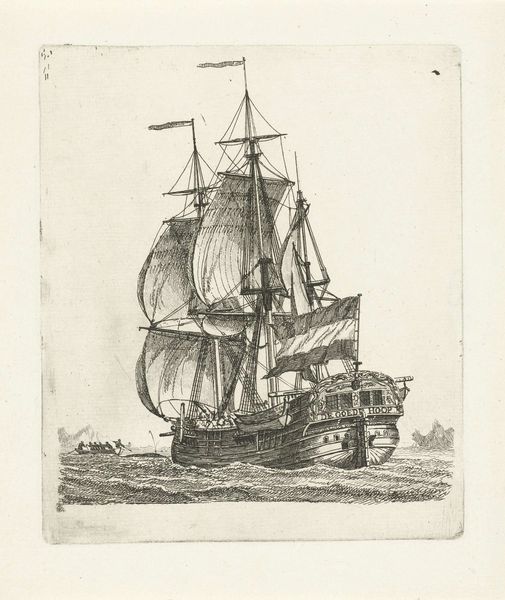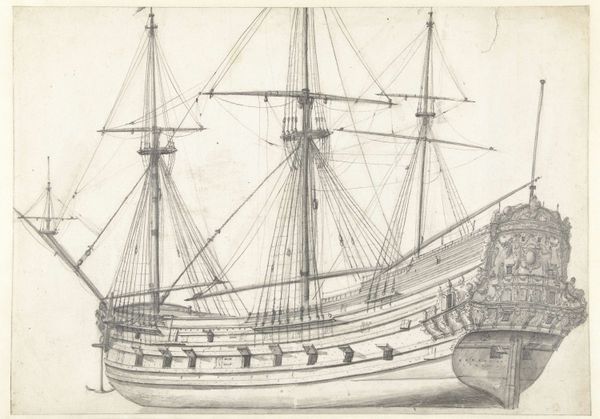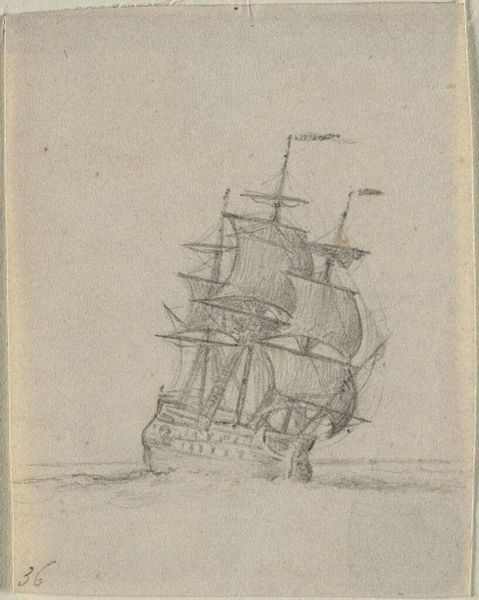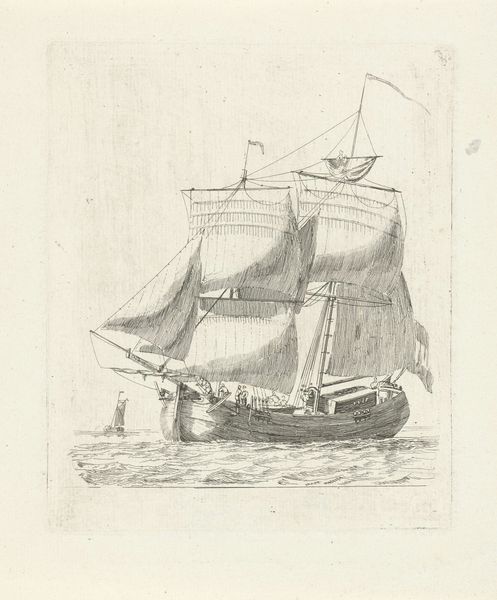
drawing, pencil
#
drawing
#
landscape
#
etching
#
pencil
#
line
#
realism
Dimensions: height 84 mm, width 105 mm
Copyright: Rijks Museum: Open Domain
Curator: Welcome. Here we have a pencil and etching work entitled "Zeilschip," which roughly translates to sailing ship. It was created by Georges Michel sometime between 1773 and 1843. Editor: There's a fragile beauty here, isn't there? The light touch of the pencil gives it a kind of ethereal quality. It evokes a sense of transience, as if the ship and the sea are fleeting moments. Curator: Notice the economy of line. Michel captures the essence of the ship—its form and structure—with minimal detail. The lines articulate the curve of the hull and the rigging with efficiency. It exemplifies a structural simplicity that transcends mere representation. Editor: I agree about the simplicity, but I see a darker undercurrent. Ships represent so much about power and exploitation during this era, don't they? It reminds me of the harsh realities of maritime trade, colonialism, and the many lives impacted by these voyages. Can a picture of a sailing ship simply *be* about the ship itself? Curator: It's important to remember the formal constraints. See how the layering of lines creates depth, implying volume in two dimensions? We shouldn't be distracted from appreciating how this technique enlivens the overall composition. Editor: But isn't that avoidance a distraction of its own? By not acknowledging the socio-historical implications, we risk sanitizing history. Michel was working during a revolutionary period, and this imagery would inevitably resonate with a wider context. Curator: You make a compelling argument for considering the context. Still, look at how the cross-hatching around the sails gives them a dynamic presence. I'm particularly intrigued by the overlapping geometric shape toward the stern of the boat—it seems intentionally obscure. What meaning can we glean from its form alone? Editor: It could be that it simply highlights the subjective nature of interpreting history. Whose perspective shapes our understanding, and what silences remain unaddressed? Curator: Indeed. Analyzing both form and the artwork’s connection to cultural factors enriches our understanding of what the piece offers. Editor: Perhaps these different angles can allow viewers to see the work and the history with fresh eyes, as well. Thank you.
Comments
No comments
Be the first to comment and join the conversation on the ultimate creative platform.
